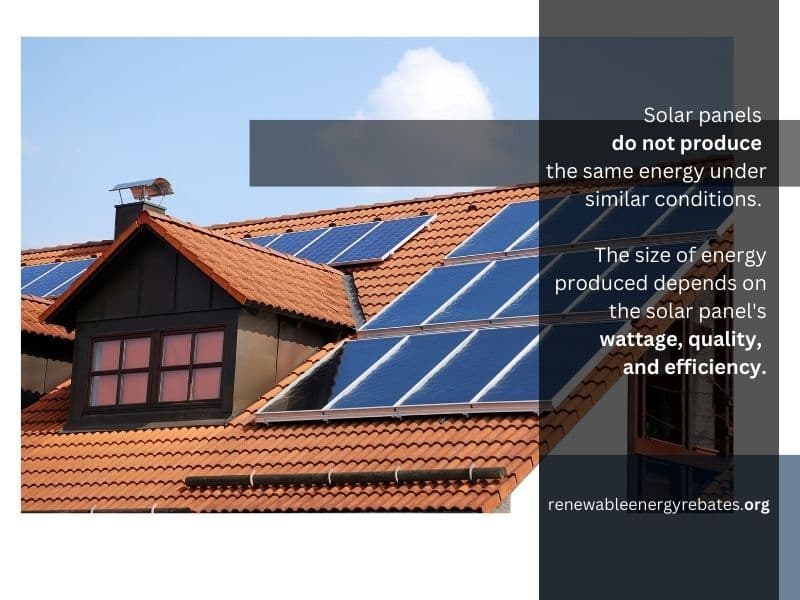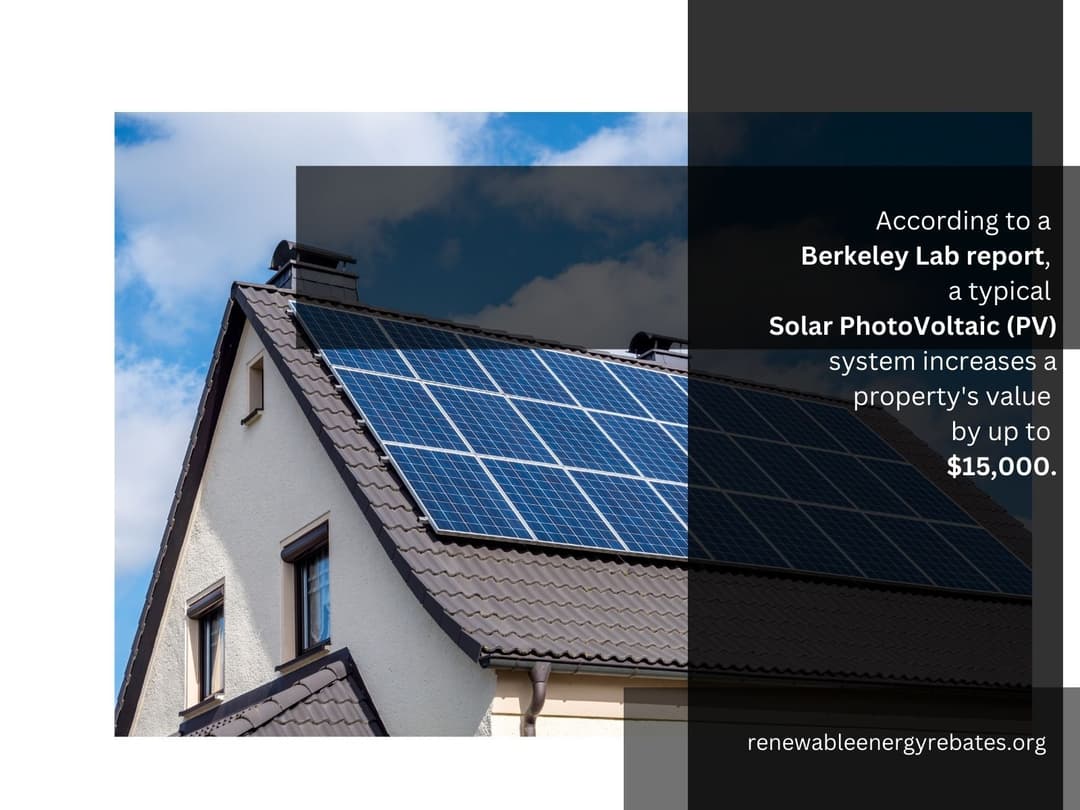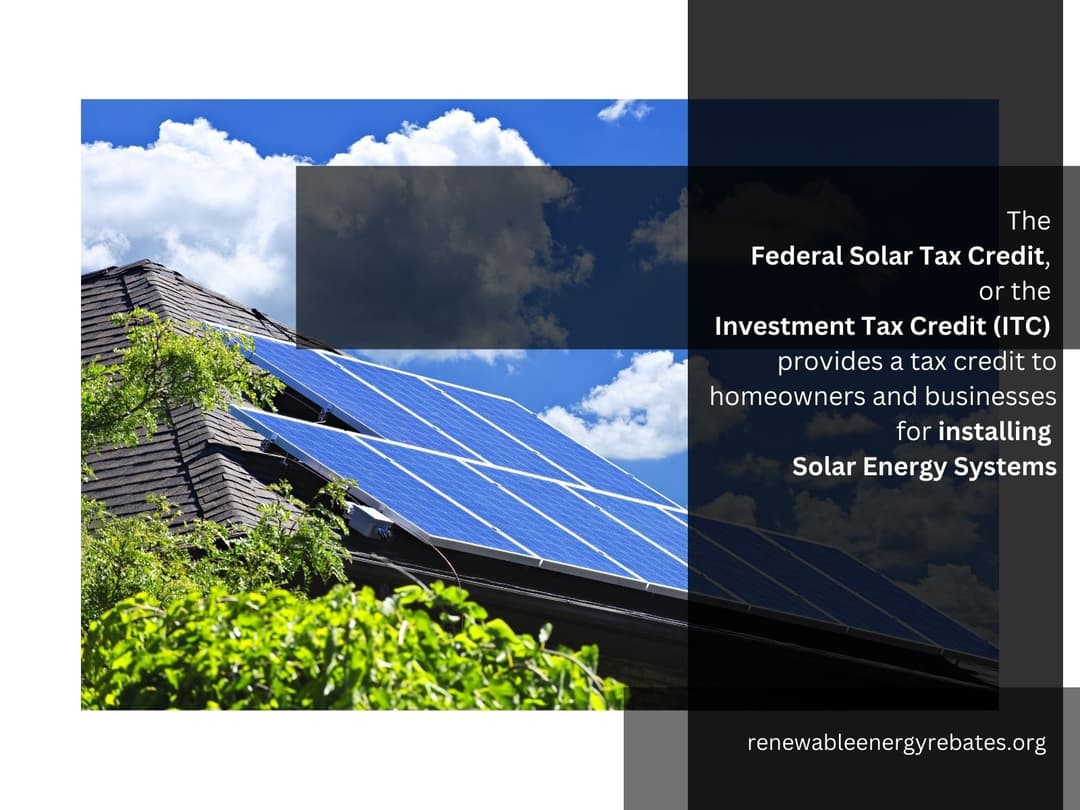Solar Panels in Contra Costa County, CA
Installing Solar Panels in Contra Costa County, California: Costs & More
Key Points
- As of 2023, solar panel installations in Contra Costa cost around $2.89 per watt
- Solar panels are exempt from property taxes under California law
- Payback period for installing a solar power system usually takes 6 years depending on factors
Going Green in Contra Costa
Solar energy offers multiple benefits to homes and businesses in Contra Costa County. In 2021, California produced 32% of the country’s total solar electricity, enough solar energy to power approximately 10,510,648 homes.

How Much do Solar Panels cost in Contra Costa County, CA?
As of 2023, the average cost of solar panels in Contra Costa County is $2.89 per watt. This means that for a 5 kilowatt (kW) solar panel system, the cost of installation ranges from $12,282 to $16,618, with the average gross price coming around $14,450.
When you factor in tax credits and other state and local solar incentives, you are likely to pay even fewer dollars for your system. The following is a generate estimate for the cost of solar panels by system size:
| Energy System Size | Solar Panel Cost | Cost After Credit |
| 3 kW | $8,670 | $6,416 |
| 4 kW | $11,560 | $8,554 |
| 5 kW | $14,450 | $10,693 |
| 6 kW | $17,340 | $12,832 |
| 7 kW | $20,230 | $14,970 |
| 8 kW | $23,120 | $17,109 |
| 9 kW | $26,010 | $19,247 |
| 10 kW | $28,900 | $21,386 |
A further breakdown of the costs of solar installation based on panel type and wattage rating:
| Average Cost Breakdown for Solar Installation in Contra Costa County | |
| Cost Per Watt | |
| Monocrystalline Solar Panels | $1 - $1.50 per watt |
| Polycrystalline Solar Panels | $0.90 - $1 per watt |
| Thin Film Solar Panels | $1 - $1.50 per watt |
| Other Costs | |
| Solar Batteries | |
| Cost of Racking | $.25 - $.50 per watt |
| Installation and soft Costs | $2.50 - $4.50 per watt |

Are Solar Panels Exempt from Property Taxes in Contra Costa County?
Yes, solar panels are generally exempt from property taxes in California. The state has an active solar energy system exclusion that allows homeowners to install solar panels in their homes without facing additional tax assessments.
Property tax exemption can be very beneficial, as it allows you to increase savings on your electric bills. However, to qualify, you must have installed an active solar energy system in your home.
Under California property tax law, active solar energy systems are "thermally isolated from living space or any other area where the energy is used, to provide for the collection, storage, or distribution of solar energy". Examples of active solar systems that enjoy property tax exemption in California include:
- Water heating systems
- Heating and space conditioning systems
- Electricity-producing systems
- Solar mechanical energy systems
Keep in mind that California property tax exemption does not cover the following energy systems:
- Solar swimming pool heaters
- Hot tub heaters
- Passive energy systems
- Wind energy systems
In California, the sunset date for the active solar energy system exclusion has been extended through the 2023-2024 fiscal year. This means that you can enjoy a tax exclusion on your solar panel system within this period. To find out more information about property taxes on solar panels in Contra Costa County, visit the property assessor's website. The address and contact information of the county's property assessor office can be seen below:
Address
2530 Arnold Drive, Suite 100
Martinez, CA 94553
Monday - Friday (8:00 am - 4:00 pm)
Email: CustomerService@assr.cccounty.us
Phone: (925) 313-7400
Fax: (925) 313-7488
How Long Does it Take for Solar Panels to Pay for themselves in Contra Costa County?
In Contra Costa County, CA, solar panels typically take around six years to pay for themselves. The solar panel payback period is the amount of time it will take you to pay off your solar power system through savings on your electric bill. You should know that many factors may influence your payback period, including:
Total costs of solar panel system
The amount of money you will be spending to install your solar panels usually affects your payback period. This amount is dependent on your system size and the solar equipment. You can calculate the total cost of your system by deducting any solar credits or rebates you may have received.
Tax rebates and incentives
The federal, state, or local government can grant you tax credits or rebates for installing solar panels in your home. These incentives significantly reduce your solar costs, which affect your payback period. You can calculate the net cost of your system by deducting the incentive amount from your solar costs.
Electricity usage
The amount of electricity you consume each month can also influence your payback period. Once you determine how much electricity your home uses, you can invest in a solar system that generates sufficient energy to meet this demand. This will help you maximize your savings in the long run.
Electricity Costs
You can calculate how much you spend on electricity to determine your solar payback period. The higher your electric bills, the shorter your estimated payback period will be. This is because you can reduce your utility bill as soon as you begin to use your solar system.
Additional financial incentives
In California, you can earn additional incentives in the form of net metering programs or solar renewable energy certificates (SRECs). These incentives can provide you with credits for the excess electricity your solar panel system generates.
Cost of a solar loan
If you have taken out a loan for your solar plan, you will have to factor in the repayment costs when calculating your payback period.

Do You Need a Handyman or a Solar Installer in Contra Costa County?
The U.S. Office of Energy Efficiency and Renewable Energy recommends that solar installations be carried out by a qualified solar installer.
One option is to contact professionals who have been certified by the North American Board of Certified Energy Practitioners (NABCEP). You can find a list of licensing classifications for solar contractors in California below:
| License Class | Type of Solar Contractors | Scope of License |
| A | General Engineering contractors | Authorized to carry out solar installations |
| B | General Building contractors | Authorized to install solar energy systems |
| C-4 | Boiler, Hot-Water Heating, and Steam Fitting Contractors | Authorized to perform projects involving solar heating equipment associated with boiler, hot-water heating, and steam-fitting systems |
| C-10 | Electrical contractors | Authorized to perform any solar projects that generate, transmit, transform, or utilize electrical energy in any form for any purpose |
| C-36 | Plumbing contractors | Authorized to perform any project using solar equipment to heat water or fluids to a suitable temperature |
| C-46 | Solar contractors | Authorized to install, modify, maintain, and repair thermal and photovoltaic solar energy systems |
| C-53 | Swimming Pool contractors | Authorized to install solar heating in swimming pool projects |
What Determines the Cost of Solar Panels in Contra Costa County, California?
You should know that the costs of solar panels may vary in Contra Costa County due to several factors, including:
Panel Type
The type of solar panel you install usually affects the cost and quality of installation. For example, if you purchase high-quality and energy-efficient panels like monocrystalline, you are likely to save more money in the long term.
Panel Brand and Solar Equipment
There are different brands of solar panels and they come in varying quality. If you opt for reputable brands and high-quality solar equipment, you are likely to spend more money on the installation.
Levelized Cost of Energy (LCOE)
This is the average cost of generating power by a solar system over its lifetime. The LCOE considers not only the cost of solar installation but also the cost of operating and maintaining the system over time. To calculate your levelized cost, divide the total cost of the solar system by the electricity it is expected to generate over its lifespan.
Price Per Watt
This is the amount of money you will pay for every watt of solar panel installed in your home. The price per watt gives you the chance to compare solar panel costs, including your system size and wattage. You can calculate your price per watt by dividing your net costs by your system wattage.
Installation Company
The cost of solar installation and equipment usually varies from company to company. You may have to pay more money if you choose a reputable solar company that is highly efficient and has good customer reviews.
What are the Incentives for Solar energy in Contra Costa County, California?
Federal, state, and local tax incentives can help reduce the amount of money spent on a solar energy installation. Solar credit programs can minimize upfront or system costs, and allow you to reclaim money on your taxes. Some of the best rebates for solar panel systems in California include:
Federal Solar Investment Tax Credit (ITC)
The ITC is one of the more popular solar incentives available in the state of California. Under this program, homeowners in Contra Costa and other parts of the state get to enjoy a 30% discount when they buy and install solar panels in their homes. To qualify for this discount, you must own a solar panel system and must have been granted permission to operate it by your utility company.
Single-Family Affordable Solar Homes (SASH) Program
You can take advantage of the SASH program if you are from a low-income household in California. The program assists you with your solar energy costs and allows saving money on your electric bills. To qualify, you must have a median household income below 80% and must be a customer of Pacific Gas and Electric Company (PG&E), Southern California Edison (SCE), or San Diego Gas & Electric (SDG&E).
Self-Generation Incentive Program (SGIP)
SGIP offers rebates to homeowners who install solar panels or solar batteries in their homes. The program aims to reduce greenhouse gas emissions and provide a more reliable electricity grid in California. You are eligible for SGIP if you receive electricity from PG&E, SCE, SDG&E, and Southern California Gas Company (SoCalGas).
Solar Energy System Property Tax Exclusion
Under California's Taxation Code, you can enjoy property tax exemption if you install a new solar energy system by December 31, 2024. Keep in mind that the solar system must be used for heating, water heating, electricity production, and solar mechanical energy. Solar systems for pool heating and hot tub heating do not qualify for tax exclusion in California.
Local Solar Rebates
Depending on the area you live in California, you can enjoy rebates from local utility companies. Sacramento Municipal Utility District (SMUD), for example, provides a $150 solar stipend to cover the cost of buying and installing solar panels in your home. The Rancho Mirage Energy Authority (RMEA) also grants a one-time $500 rebate to solar customers who install new solar systems in their homes.
Property Assessed Clean Energy (PACE) Program
If you want to finance the entire cost of your solar systems through property taxes, the PACE program is a good choice for you. By participating in this program, you can receive upfront costs on your solar system and repay the costs within five to 20 years.

How can I Sell Solar Energy in Contra Costa County?
If you are using a solar system in your home, you may be wondering what to do when it produces surplus energy. Through a process called net metering, you can sell unused solar electricity back to your utility company. Once you do this, you will receive bill credits for the same amount of energy. These credits are applied to your monthly utility bills and can help reduce your future energy costs.
Since 1996, California has adopted different generations of net metering that aim to increase solar installations among homeowners. The first net metering program was called NEM 1.0 and it applied to solar customers who sign up before July 1, 2017. This program includes a $1 monthly interconnection fee, $0.25 per kWh bill credit, and average monthly savings of $245 for a 10 kW system.
In January 2016, the California Public Utilities Commission (CPUC) passed another generation of the net metering program. Called NEM 2.0, the program applies to customers who register after July 1, 2017. NEM 2.0 provides a $75 one-time interconnection fee, $0.25 per kWh bill credit, and average monthly savings of $204 for a 10 kW system.
Net Metering 3.0
In 2022, CPUC approved the third generation of net metering, now known as NEM 3.0. This successor tariff applies to homeowners who receive electric services from PG&E, SCE, and SDG&E.
NEM 3.0 provides an $8 per kW monthly interconnection fee, $0.05 per kWh bill credits, and average savings of $70 per month for a 10 kW system.
Are Tesla Solar Panels Available in Contra Costa County, California?
Yes, Tesla solar panels are available in Contra Costa County, CA. Tesla provides installation in the county either directly or indirectly through its Certified Installer Program.
You can use this program to find local solar installers who are trained to provide high-quality solar installation.
Tesla solar providers have the required certifications to install solar panel systems in your home. They are professionals who adhere to strict quality, design, permitting, and inspection requirements. You can find certified solar installers in your area by conducting an online search.
Do Solar Panels Increase a Home Value in Contra Costa County?
Yes, solar panels can increase the value of a property in Contra Costa County, CA. The National Renewable Energy Laboratory (NREL) noted that for every $1 you save on electricity bills as a result of going solar, your home value increases by $20. However, keep in mind that the level of value solar panels add to your home usually depends on a number of factors. Some of these factors include the location of your property, costs of solar installation, size and age of your system, and current market conditions.
How to Find Solar Companies Near Me in Contra Costa County, California?
Hiring qualified professionals that will do a great job should always be on your mind when searching for a solar installer near you. There are different ways to go about searching for a local solar company in California.
You can search online for terms like "California solar installer near me" or "Contra Costa solar company near me". The search results will direct you to the websites of dozens of installers around your location. When choosing a solar installer near you, ask yourself the following questions:
- Is the solar installer certified?
- Is the solar installer reputable and experienced?
- Does the solar installer have good customer reviews and references?
- Does the solar installer offer a warranty?
Is the Solar Installer Certified?
You should always ensure that the installer has the required certification for the job. The industry-standard certification is awarded by NABCEP, which is widely recognized among solar installers in California. This certification is proof that the installer has the necessary qualifications and expertise for the work.
Is the Solar Installer Reputable and Experienced?
Make sure you choose a solar company that has years of experience in solar installations. The installer should be knowledgeable about all aspects of the work, including solar equipment, rebates, credits, and warranties. It should also have a good reputation in the area for offering high-quality solar installations.
Does the Solar Installer have Positive Customer Reviews?
When searching for a solar company near you, you should read online reviews from the company's past clients. These reviews will provide insight into the quality of the installer's work and the effectiveness of its customer service.
Does the Solar Installer Have Good References?
You can also ask your friends and family members that have gone solar to recommend an installer to you. They can give you direct feedback from their personal experiences with the solar company. This will guide you when choosing the right professional to work for you.
Does the Solar Installer Offer a Warranty?
When you hire a solar installer, you will usually receive warranties that provide for equipment, labor, and performance assurances. Manufacturers' warranties, for example, provide for repairs or replacements if the installed equipment malfunctions within a specified period. It is therefore essential to hire a professional solar installer that would provide you with long-term warranties.
County Profile
Located in the East Bay region of Northern California, Contra Costa county is home to over one million residents. When compared to other citizens, US-born nationals account for 70% of residents in Contra Costa County. Non-US-born citizens represent 15%, while foreign nationals constitute 10%.
In recent years, the number of households in Contra Costa County has increased tremendously. The county has a total of 462,339 households, which consist of both family and non-family units. Family establishments make up the majority of households in Contra Costa County and account for 71.47%. The remaining 28.53% consists of non-family units. Additionally, over 60% of households are without children in the county.
According to 2021 census estimates, homeowners occupy 67% of the county's housing units, while the remaining 33% have renters living in them. The table below shows the number of housing units built in Contra Costa County from 1939 to 2010 or later:
| Median Year Built | Number of Housing Units | % of Housing Units |
| 1939 or Earlier | 27,980 | 0.3 |
| 1940 - 1949 | 30,857 | 2.6 |
| 1950 - 1959 | 57,291 | 1.6 |
| 1960 - 1969 | 65,494 | 2.6 |
| 1970 - 1979 | 86,458 | 3.0 |
| 1980 - 1989 | 75,625 | 1.7 |
| 1990 - 1999 | 63,742 | 3.7 |
| 2000 - 2009 | 54,961 | 0.3 |
| 2010 or Later | 19,049 | 12.5 |